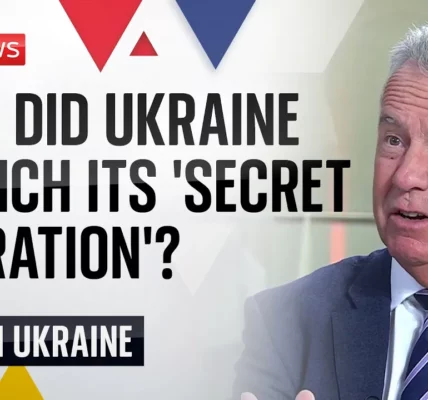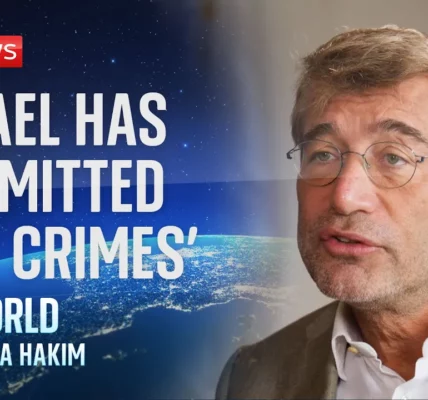Air Strikes in Yemen Against Iranian-Linked Militias: Growing Fears of Regional War

This article delves into the recent air strikes in Yemen by Israel targeting Houthi militants, the broader implications for regional stability, and the ongoing military operations against Iranian-backed forces in the Middle East.
Introduction
The recent escalation of military actions in the Middle East has drawn international attention, particularly the air strikes conducted by Israel in Yemen against militias linked to Iran. As tensions rise, fears of a broader regional war loom large. This article explores the strategic motivations behind Israel’s actions, the implications for regional stability, and the ongoing conflict involving Iranian proxies. The situation is evolving rapidly, and understanding the dynamics at play is crucial for grasping the potential outcomes of these military engagements.
Israel’s Military Operations Against Iranian-Linked Militias
Israel’s recent air strikes targeted a port facility reportedly used by Houthi militants for the transport of Iranian weapons. The strikes came in response to missile fire directed at Israel, highlighting the ongoing military confrontations between Israel and Iranian-affiliated groups in the region.
Strategic Importance of Houthi Militants
The Houthi rebels, based in Yemen, have been a significant player in the regional conflict, receiving support from Iran. Their ability to launch missiles towards Israel poses a direct threat, prompting Israel to take preemptive military actions. The strategic importance of the Houthis can be summarized as follows:
- Geopolitical Position: Yemen’s location allows for strategic maritime control in the Red Sea.
- Proxy Warfare: The Houthis serve as a proxy for Iran, extending Tehran’s influence across the Arabian Peninsula.
- Regional Stability: Their military capabilities impact the security of neighboring countries, including Saudi Arabia.
Ongoing Conflict with Hezbollah and Hamas
In addition to the situation in Yemen, Israel is actively engaged in military operations against Hezbollah in Lebanon and Hamas in Gaza. This multifaceted conflict is characterized by a series of strategic attacks aimed at weakening these groups.
Hezbollah’s Role in the Conflict
Hezbollah, a powerful paramilitary force in Lebanon, has been a primary adversary for Israel. The current military campaign against Hezbollah is marked by:
- Leadership Targeting: Israel successfully eliminated key leaders within Hezbollah, aiming to disrupt its command structure.
- Operational Strikes: Continuous air strikes have targeted Hezbollah’s military infrastructure, significantly degrading its military capabilities.
- Escalation of Rocket Fire: Increased rocket fire from Lebanon into Northern Israel has raised the stakes for military engagement.
The Situation in Gaza
At the same time, Israel’s operations against Hamas in Gaza have intensified. The objective is to diminish Hamas’ ability to launch attacks on Israeli territory. Key points include:
- Targeting of missile launch sites and weapon depots.
- Intelligence operations to disrupt planned attacks.
- Humanitarian considerations and the impact of military actions on civilian populations.
The Human Cost of Conflict
As military operations continue, the human cost of the conflict remains a critical concern. Many civilians have been displaced, and the toll on families is profound. The story of the Golan family from Northern Israel exemplifies the emotional and psychological impact of the ongoing violence.
The Golan Family’s Experience
Having fled their home due to the threat posed by Hezbollah rockets, the Golan family represents the plight of over 60,000 Israelis who have been forced to leave their homes. Their experiences highlight:
- Fear and Uncertainty: The constant threat of rocket fire has instilled fear in families, affecting their daily lives.
- Hope for Return: Many displaced families express a strong desire to return home, despite the challenges they face.
- Community and Resilience: The strength of community in times of adversity plays a crucial role in coping with the ongoing conflict.
Conclusion
The situation in the Middle East remains volatile, with Israel’s military actions against Iranian-linked militias underscoring the complexity of regional conflicts. The ongoing threats from Hezbollah and Hamas continue to challenge Israeli security, and the personal stories of families like the Golan family remind us of the human cost of war. As tensions escalate, it is essential for the international community to engage in dialogue and seek pathways to peace. To stay informed on developments in this region, explore our related articles on Middle Eastern geopolitics and military strategies.
“`




